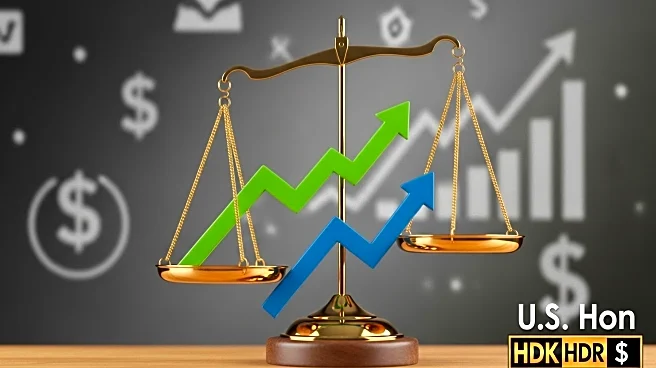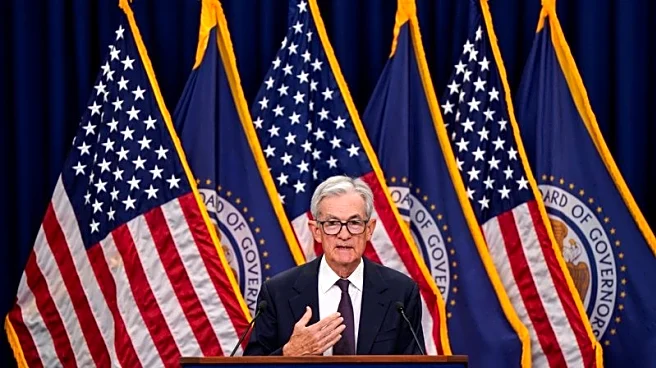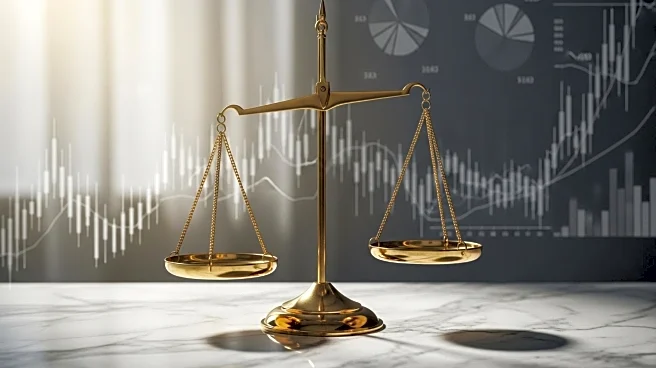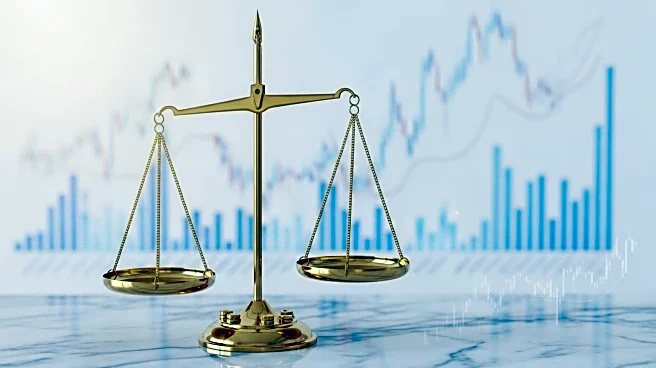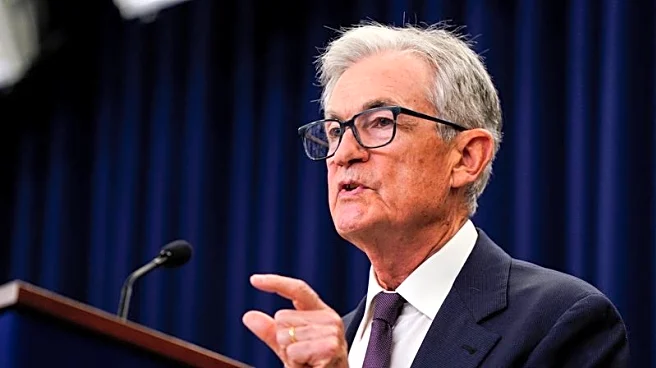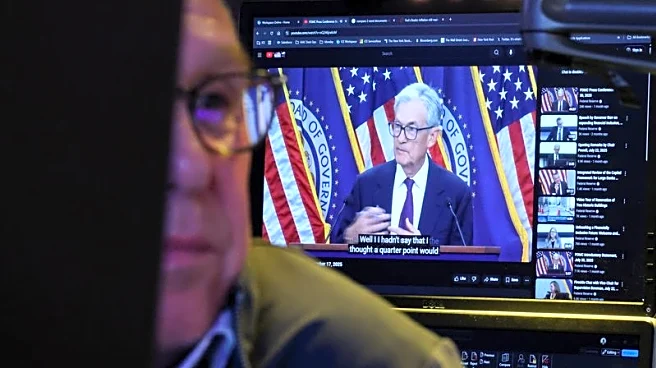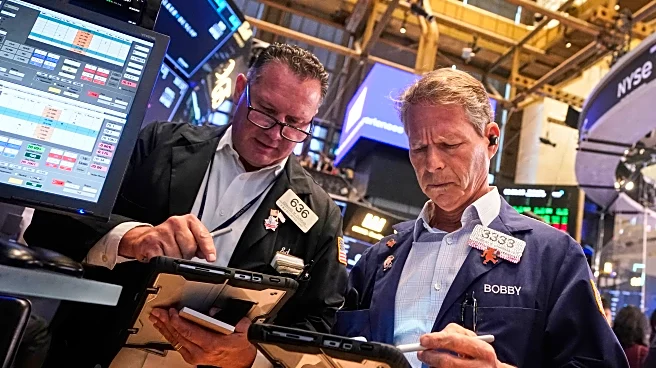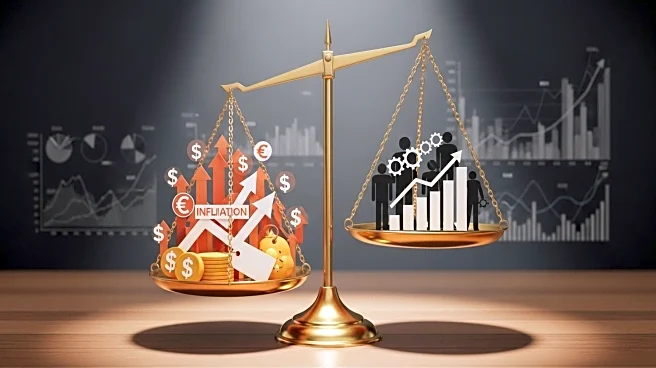What is the story about?
What's Happening?
Federal Reserve Chair Jerome Powell's recent comments have led to a rebound in the U.S. dollar, which rose from its lowest level in nearly a week. Powell struck a cautious tone regarding further easing, despite market expectations of two more rate cuts this year. The U.S. dollar index, which measures the currency against six major rivals, increased by 0.5% to trade at 97.745. This rise comes after two consecutive losing sessions. Powell's remarks highlighted the risks of premature easing, which could entrench inflation, and excessive monetary restriction, which might harm employment prospects. The market is now focused on upcoming U.S. data, particularly the personal consumption expenditures (PCE) price index, which will influence expectations for the Federal Reserve's next policy steps.
Why It's Important?
Powell's cautious stance is significant as it impacts the U.S. dollar's strength and influences global currency markets. The dollar's rebound affects international trade and investment, as a stronger dollar can make U.S. exports more expensive and imports cheaper. The anticipation of rate cuts reflects ongoing concerns about inflation and employment, which are critical factors in the U.S. economic outlook. Investors and businesses are closely monitoring these developments, as they could affect financial markets and economic growth. The Federal Reserve's policy decisions are crucial in shaping economic conditions, influencing interest rates, and guiding monetary policy.
What's Next?
The focus will be on the release of the PCE price index, which is a key indicator for the Federal Reserve's policy decisions. If the index shows a 0.2% month-on-month increase, it could cement expectations for two rate cuts this year. However, geopolitical developments in Europe could alter this outlook. San Francisco Fed President Mary Daly is expected to speak on the economic outlook, which may provide further insights into the Federal Reserve's future actions. Market participants will continue to assess economic data and geopolitical events to gauge the direction of U.S. monetary policy.
AI Generated Content
Do you find this article useful?
